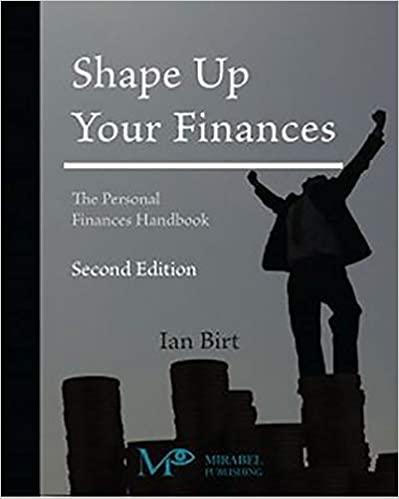Answered step by step
Verified Expert Solution
Question
1 Approved Answer
Future value. You have $100 to invest. If you put the money into an account earning 5% interest compounded annually, how much money will you




Step by Step Solution
There are 3 Steps involved in it
Step: 1

Get Instant Access to Expert-Tailored Solutions
See step-by-step solutions with expert insights and AI powered tools for academic success
Step: 2

Step: 3

Ace Your Homework with AI
Get the answers you need in no time with our AI-driven, step-by-step assistance
Get Started


